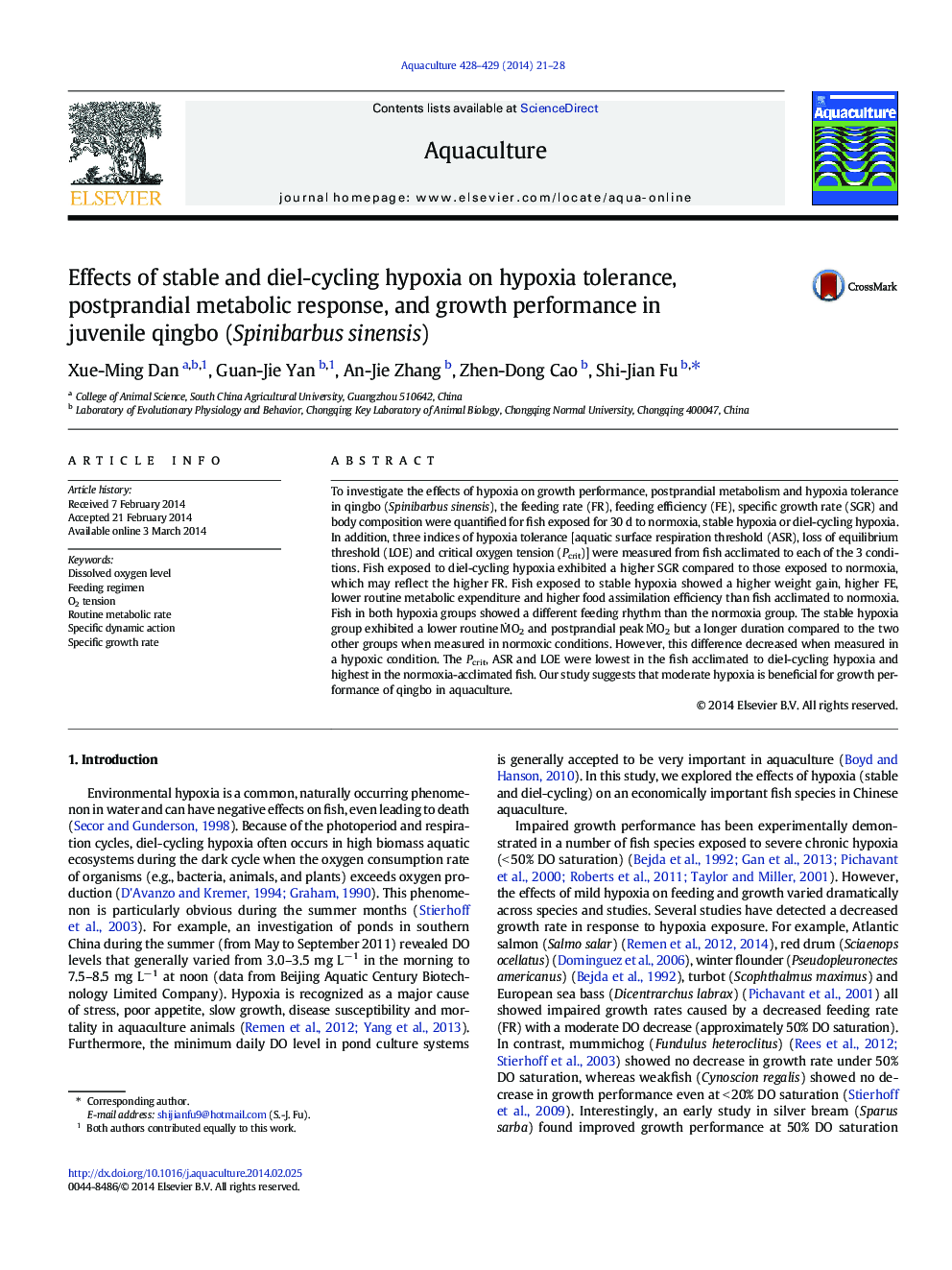| Article ID | Journal | Published Year | Pages | File Type |
|---|---|---|---|---|
| 8495106 | Aquaculture | 2014 | 8 Pages |
Abstract
To investigate the effects of hypoxia on growth performance, postprandial metabolism and hypoxia tolerance in qingbo (Spinibarbus sinensis), the feeding rate (FR), feeding efficiency (FE), specific growth rate (SGR) and body composition were quantified for fish exposed for 30Â d to normoxia, stable hypoxia or diel-cycling hypoxia. In addition, three indices of hypoxia tolerance [aquatic surface respiration threshold (ASR), loss of equilibrium threshold (LOE) and critical oxygen tension (Pcrit)] were measured from fish acclimated to each of the 3 conditions. Fish exposed to diel-cycling hypoxia exhibited a higher SGR compared to those exposed to normoxia, which may reflect the higher FR. Fish exposed to stable hypoxia showed a higher weight gain, higher FE, lower routine metabolic expenditure and higher food assimilation efficiency than fish acclimated to normoxia. Fish in both hypoxia groups showed a different feeding rhythm than the normoxia group. The stable hypoxia group exhibited a lower routine MËO2 and postprandial peak MËO2 but a longer duration compared to the two other groups when measured in normoxic conditions. However, this difference decreased when measured in a hypoxic condition. The Pcrit, ASR and LOE were lowest in the fish acclimated to diel-cycling hypoxia and highest in the normoxia-acclimated fish. Our study suggests that moderate hypoxia is beneficial for growth performance of qingbo in aquaculture.
Related Topics
Life Sciences
Agricultural and Biological Sciences
Aquatic Science
Authors
Xue-Ming Dan, Guan-Jie Yan, An-Jie Zhang, Zhen-Dong Cao, Shi-Jian Fu,
